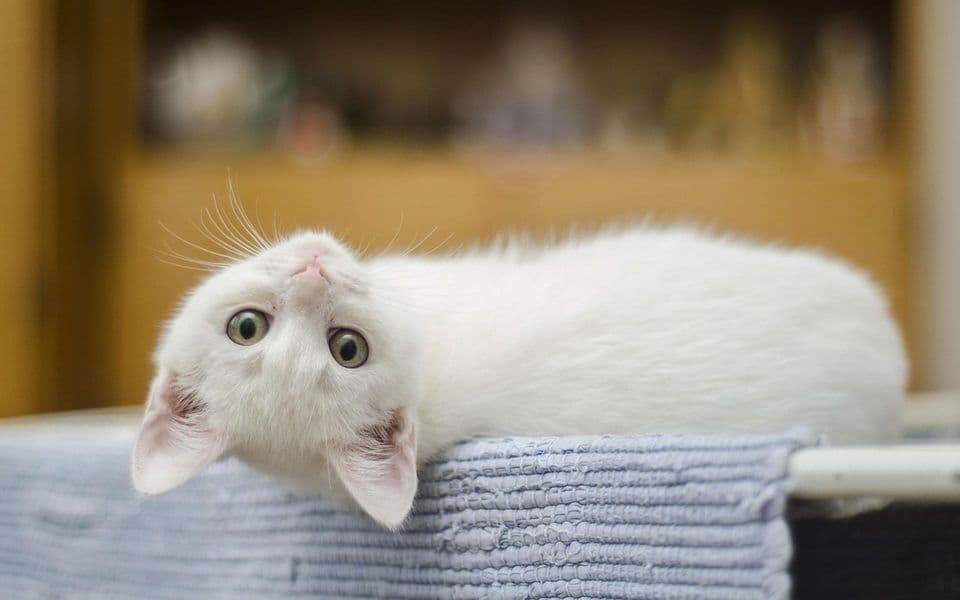Lifestyle
Understanding the Causes of Cats’ Tangled Fur: What You Need to Know

Cats are beloved companions for many, but their grooming needs can sometimes cause concern. A recent examination of the causes behind tangled fur in cats highlights the importance of understanding grooming habits and health factors. Pet owners should be aware of the reasons that lead to this common issue to ensure their feline friends remain healthy and comfortable.
The Role of Grooming in Cat Care
Cats are known for their meticulous grooming habits. They spend a significant portion of their day cleaning themselves, which helps maintain their coat and skin health. However, certain factors can disrupt this natural process, leading to tangled fur. According to veterinary professionals, factors such as the cat’s age, health conditions, and coat type are crucial in determining how easily a cat can keep its fur smooth.
For instance, older cats may struggle with grooming due to arthritis, making it difficult for them to reach all areas of their body. Additionally, overweight cats may have trouble grooming effectively, as their size can limit flexibility. Regular veterinary check-ups, especially for cats aged seven years and older, are essential for identifying any underlying health issues that could contribute to grooming difficulties.
Common Causes of Tangled Fur
Several common causes contribute to tangled fur in cats. A primary reason is the type of coat a cat possesses. Long-haired breeds, such as Persians and Maine Coons, are more prone to matting than their short-haired counterparts. Grooming experts recommend daily brushing for these breeds to prevent tangles from forming.
Another contributing factor is shedding. During seasonal changes, cats may shed more fur, increasing the likelihood of tangling. Pet owners should be proactive during these periods, using appropriate grooming tools to manage loose hair effectively.
Stress can also play a significant role in a cat’s grooming behavior. Changes in the household, such as moving to a new home or the introduction of a new pet, can lead to anxiety that affects a cat’s grooming habits. Animal behaviorists suggest providing a stable environment and ensuring that cats have safe spaces where they can retreat when feeling overwhelmed.
Preventing and Managing Tangled Fur
Preventing tangled fur involves a combination of regular grooming, health monitoring, and environmental management. Pet owners should establish a grooming routine that suits their cat’s coat type. For long-haired cats, daily brushing is advisable, while short-haired cats may only need grooming a few times a week.
In addition to grooming, it is crucial to monitor a cat’s health. Any sudden changes in grooming behavior should prompt a visit to the veterinarian. Regular check-ups can help identify issues such as skin conditions or parasites that may contribute to tangled fur.
Furthermore, creating a calming environment can alleviate stress-induced grooming problems. Providing enrichment activities and ensuring that cats have access to comfortable resting areas can help them feel secure and maintain their grooming habits.
In conclusion, understanding the causes of tangled fur in cats is vital for pet owners. By being proactive in grooming and monitoring their cats’ health, owners can help ensure their feline companions remain healthy and happy. Implementing these strategies can lead to a better quality of life for cats and a more enjoyable experience for their owners.
-

 Health3 months ago
Health3 months agoNeurologist Warns Excessive Use of Supplements Can Harm Brain
-

 Health3 months ago
Health3 months agoFiona Phillips’ Husband Shares Heartfelt Update on Her Alzheimer’s Journey
-

 Science2 months ago
Science2 months agoBrian Cox Addresses Claims of Alien Probe in 3I/ATLAS Discovery
-

 Science2 months ago
Science2 months agoNASA Investigates Unusual Comet 3I/ATLAS; New Findings Emerge
-

 Science1 month ago
Science1 month agoScientists Examine 3I/ATLAS: Alien Artifact or Cosmic Oddity?
-

 Entertainment5 months ago
Entertainment5 months agoKerry Katona Discusses Future Baby Plans and Brian McFadden’s Wedding
-

 Science1 month ago
Science1 month agoNASA Investigates Speedy Object 3I/ATLAS, Sparking Speculation
-

 Entertainment4 months ago
Entertainment4 months agoEmmerdale Faces Tension as Dylan and April’s Lives Hang in the Balance
-

 World3 months ago
World3 months agoCole Palmer’s Cryptic Message to Kobbie Mainoo Following Loan Talks
-

 Science1 month ago
Science1 month agoNASA Scientists Explore Origins of 3I/ATLAS, a Fast-Moving Visitor
-

 Entertainment2 months ago
Entertainment2 months agoLewis Cope Addresses Accusations of Dance Training Advantage
-

 Entertainment4 months ago
Entertainment4 months agoMajor Cast Changes at Coronation Street: Exits and Returns in 2025









